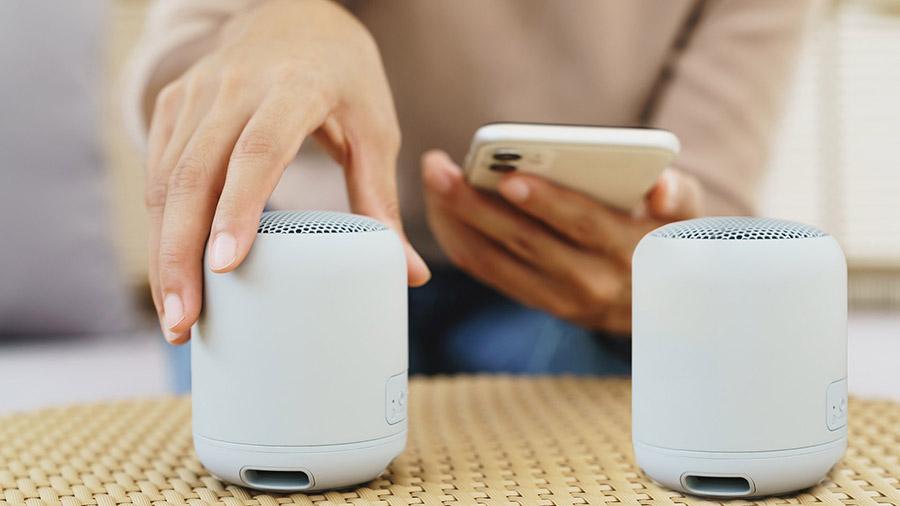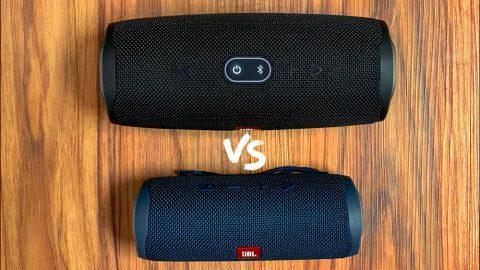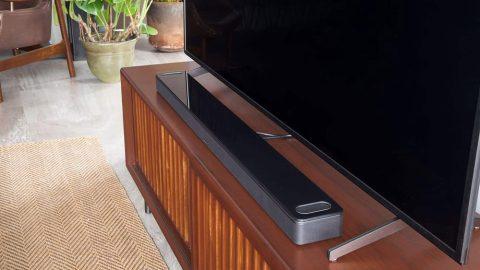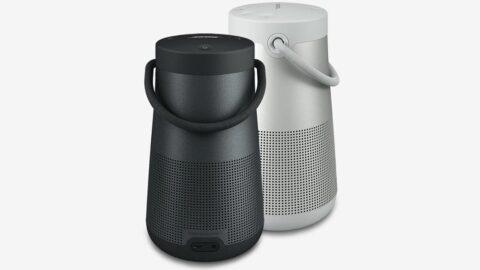How to Connect Two Bluetooth Speakers to One iPhone

Ever since the adoption of dual audio in Bluetooth 5.0, playing audio on two connected speakers at the same time has never been easier. Yet, some devices still do not support or limit specific Bluetooth features. As a result, many users still find it difficult to share music between two speakers, especially if they’re using an iPhone.
Apple used to support “Audio Sharing” on non-Apple devices, but they’ve long disabled support. Now only a small number of Apple-owned devices are compatible with this feature. If you want to connect your iPhone with two Bluetooth speakers, your best option is a Bluetooth adapter.
A dual 5.1 Bluetooth Transmitter Receiver Adapter can pair two different Bluetooth devices at the same time and offers many configuration options. It’s easy to use, and there is no need to download any additional software. Furthermore, you’ll only need to complete the setup once since turning the adapter on again will automatically reconnect to the last connected devices.
How to Connect Two Bluetooth Speakers to iPhone
You can connect your iPhone to a Bluetooth adapter (via a 3.5mm audio cable), so you can wirelessly stream music through two speakers simultaneously. You can accomplish this connection using the Bluetooth adapter in transmitter (TX) mode.
Here’s what you’ll need:
- iPhone
- Two Bluetooth Speakers
- Lightning to 3.5mm Headphone Jack Adapter
- 5.1 Bluetooth 2-in-1 Transmitter Receiver Adapter
Here’s how to do it:
- Connect the Lightning to 3.5mm Headphone Jack Adapter to your phone.
- Connect the supplied 3.5mm audio cable to the Bluetooth Adapter.
- Connect the 3.5mm audio cable to the Lightning to 3.5mm Headphone Jack Adapter.
- Set the Bluetooth Adapter to TX mode and power it on.
- The Bluetooth Adapter display will show “Connecting” then “Searching.”
- Place both Bluetooth speakers near the Bluetooth Adapter.
- Turn on the first Bluetooth speaker and put it into pairing mode.
- After a short period of time, the speaker’s name will appear on the Bluetooth Adapter display.
- Press the OK button on the Bluetooth Adapter to pair the first speaker.
- You should hear sound through your first Bluetooth speaker now.
- After the first Bluetooth speaker is connected successfully, turn on the second Bluetooth speaker and put it into pairing mode.
- Press the pairing button on the side of the Bluetooth Adapter.
- The Bluetooth Adapter will start searching for the second speaker.
- After a short time, the speaker’s name will appear on the Bluetooth Adapter display.
- When you see the second speaker’s name, press the OK button.
- After connecting successfully, both speakers will appear on the screen.
How to Connect iPhone to Two Bluetooth Speakers
Alternatively, you can wirelessly pair your iPhone to a Bluetooth adapter so you can stream audio through two speakers connected (via 3.5mm audio cables). You can accomplish this connection using the Bluetooth adapter in receiver (RX) mode.
Here’s what you’ll need:
- iPhone
- Two Speakers (with AUX Input)
- 2-way 3.5mm Headphone Splitter
- Two Male-to-Male 3.5mm Audio Cables
- 5.1 Bluetooth 2-in-1 Transmitter Receiver Adapter
Here’s how to do it:
- On your iPhone, tap Settings, Bluetooth, and enable Bluetooth.
- Place your phone near the Bluetooth Adapter.
- Set the Bluetooth Adapter to RX mode and power it on.
- To pair, tap the Bluetooth Adapter name when it appears on your iPhone.
- You will see a request to pair the device. Click OK.
- Once connected, you will see the name of your iPhone on the Bluetooth Adapter display.
- Connect the male end of the Headphone Splitter to the Bluetooth Adapter.
- Then, connect a 3.5mm Audio Cable to Headphone Splitter and the other end into the first speaker.
- You should hear sound through your first speaker now.
- Then, connect a 3.5mm Audio Cable to Headphone Splitter and the other end into the second speaker.
- After connecting successfully, both speakers will play audio.
GadgetAudio.com is reader supported. We may earn a small commission from affiliate links in this article. As an Amazon Associate, we earn from qualifying purchases. Learn more.



